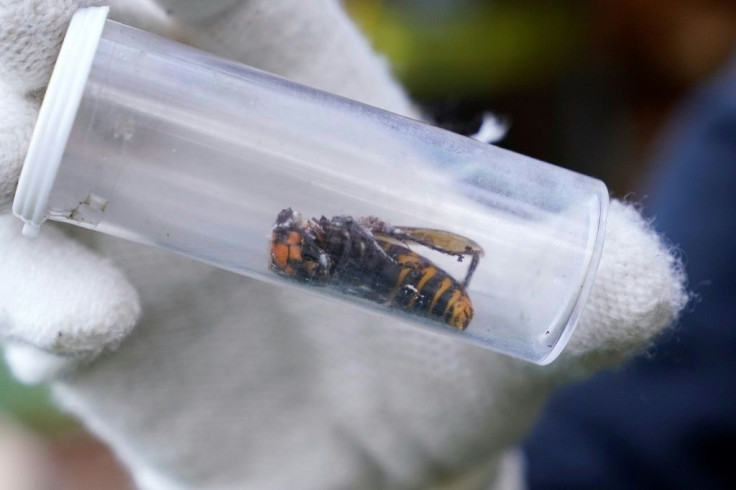Scientists Discover How To Trap Invasive Giant Hornets Using Sex
KEY POINTS
- Vespid species such as Asian giant hornets are said to be difficult to eliminate
- Asian giant hornets were spotted in North America in 2020
- Researchers identified the queen sex pheromones that could trap and track the species
Asian Giant Hornets have made their mark in North America, threatening native bee populations. A team of researchers has now found a way to use sex to trap and potentially eliminate the so-called "murder hornets."
The Asian Giant Hornet (vespa mandarinia) is an invasive species that has the capability to decimate entire bee colonies, thus garnering the now infamous moniker "murder hornet." An invasion could threaten not just the bee populations but also millions of dollars in crop production, the University of California-San Diego (UC San Diego) noted in a news release.
After the world's largest hornet species was spotted in Washington State in 2020, authorities have been working hard to contain the spread of the species. However, vespid species are not easy to eliminate for several reasons, the researchers wrote in their paper, published today in Current Biology.
"(T)hey are all eusocial, benefit from division of labor, have large colonies, and can have hidden nests," the authors wrote. "At present, traplining followed by manual nest removal is the primary control strategy for V. mandarinia but is laborious and depends mainly upon the visual detection of hornets."
For their study, the researchers caught sexually mature giant hornet queens and drones in Yunnan, China, to determine the queen's sex pheromones that attract the males of the species. The researchers were able to identify the chemicals hexanoic acid, octanoic acid and decanoic acid as their key components. In the experiments, they placed sticky board traps close to the hornet nest with different treatments including the identified compounds.
"When these components or their blend was tested in sticky traps, they captured thousands of males," study co-author, entomologist James Nieh of UC San Diego, told Gizmodo. "We did not capture any other insects or even female giant hornets. This reduces their ecological impact."
These chemicals can easily be bought and deployed in the field, UC San Diego noted. As such, the researchers suggest "immediate testing" of the components "given the urgent need to monitor the spread of V. mandarinia in North America" while other queen sex pheromones are being tested.
In fact, the researchers did not patent their findings and chose to publish them in the hopes of finding a solution to the potential problem, UC San Diego noted.
"We hope that others, especially in invaded areas, will take the protocol we have established and test this method," Nieh said in the university news release. "We've described the chemical blends needed for these traps, which could reduce the number of males available to mate with females to help depress the population but primarily would help us figure out where they are."
The researchers' next goal is to test the distance at which the chemicals will still be effective in the upcoming "hornet season" in China, Gizmodo noted.
However, Nieh also has another request concerning the species. While the species can certainly be destructive, he is urging people to stop calling them "murder hornets."
"My usual plea is that people should stop calling them 'murder hornets' because they are large and perhaps frightening but not truly murderous," Nieh said, as per UC San Diego. "They are amazing social insects, but they don't belong in North America and harm our critical bee populations, so we should remove them."

© Copyright IBTimes 2024. All rights reserved.






















